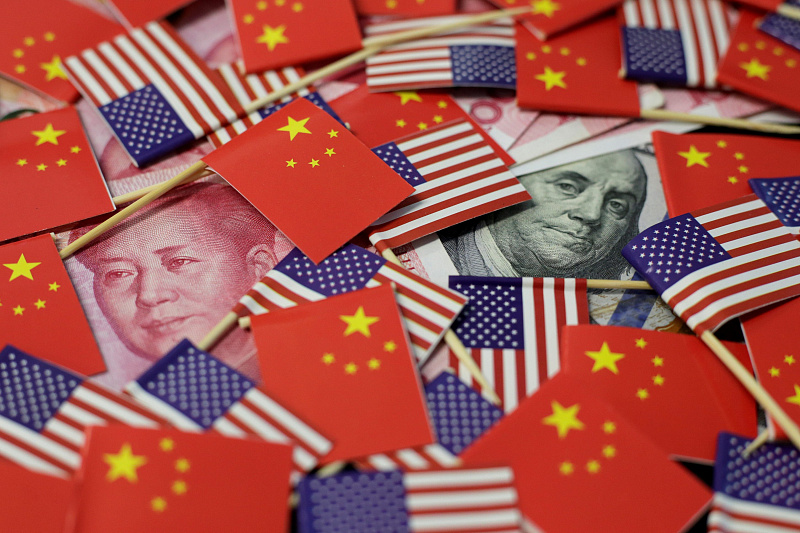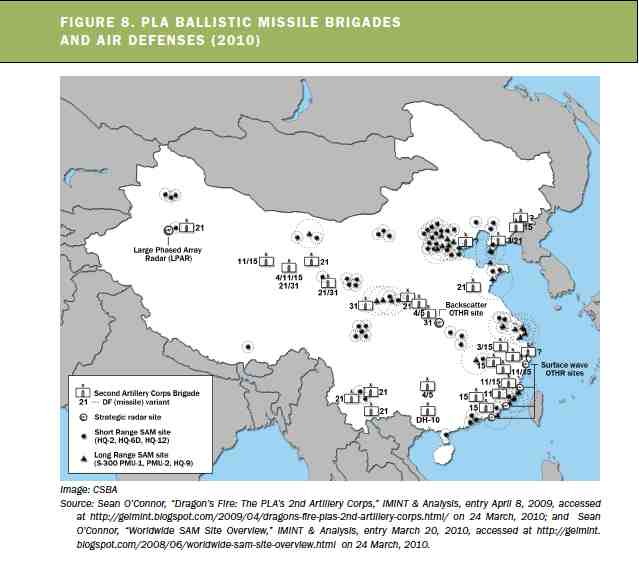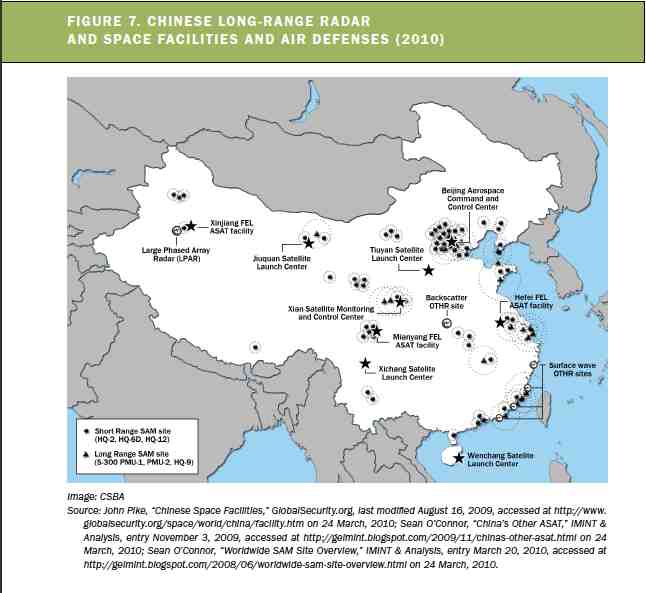War with China: TX Hammes, CSBA, RAND and CSIS–Thinking through the Unthinkable and rethinking Armaggedon
In
Log in if you are already registered
The US and Chinese goverment both claim that no side wanted a sinoamerican war and that this event was unlikely.However, both sides and their strategists sometimes point out that misperceptions and miscalculations could trigger such a war. That Obama rebalances his Asian pivot and China at the same time claims territories in the South and East Chinese Sea and expands its spheres of influence in the Pacific steadily make crisis, conflicts and maybe even a war more likely.That this unlikely war seems to be perceived as not so unlikely proves the fact that a real flood of US studies about sinoamerican war secenarios are published at the moment. Starting with the Center for Strategic Budgetary Assessment (CSBA)´s study „Why Airseabattle?“ which promotes an operative concept to bomb China mainland as long as the Chinese give in, TX Hammes issued his Offshore Controll (OC) strategy which propagates a maritime blockade of China comparable to the US blockade of Imperial Japan in the Second World War. Both concepts and strategies claim that such a sinoamerican war wouldn´t escalate to a nuclear war and that the USA could win such a war.

Source: omments.ua
In an interview TX Hammes explained Global Review the strategy of Offshore Controll:
Global Review : Could you give the German audience a description what OC is? And what are the differences to ASB/JOAC?
TX Hammes: Any U.S. military strategy for Asia must achieve six objectives: (1) insure access for U.S. forces and allied commercial interests to the global commons; (2) assure Asian nations that the United States is both willing to and capable of remaining engaged in Asia; (3) deter China from military action to resolve disputes while encouraging its continued economic growth; (4) in the event that deterrence fails, achieve US objectives with minimal risk of nuclear escalation; (5) discourage friends and allies from taking aggressive steps that further destabilize the region; and (6) be visible and credible today, not years in the future.
“Offshore Control” is an effective and affordable approach. Offshore Control establishes a set of concentric rings that denies China the use of the sea inside the first island chain, defends the sea and air space of the first island chain and US allies therein, and dominates the air and maritime space outside the island chain. Offshore Control does not strike into China but takes advantage of geography to block China’s exports and thus severely weaken its economy. No operations will penetrate Chinese airspace. Prohibiting penetration is intended to reduce the possibility of nuclear escalation and make conflict termination easier.
Denial as an element of the campaign plays to U.S. strengths by employing primarily attack submarines, drones, mines, and a limited number of air assets inside the first island chain. This area will be declared a maritime exclusion zone with the warning that enemy ships in the zone will be sunk or boarded. If these ships evade the blockade and trade with China, they will be subject to seizure and prize court when they pass through the 1st Island Chain on their return voyage. While the United States cannot stop all sea traffic in this zone, it can prevent the passage of large cargo ships and large tankers, severely disrupting China’s economy relatively quickly.
The defensive component of Offshore Control will bring the full range of U.S. assets to defend allied soil and encourage allies to contribute to that defense. It takes advantage of geography to force China to fight at longer ranges while allowing U.S. and allied forces to fight as part of an integrated air-sea defense over their own territories. It maximizes US strengths in blue water sea control, theater air defense, undersea warfare, and aerospace while avoiding China’s inherent advantages on and near the mainland. In short, it will flip the advantages of anti-access/area denial to the United States and its allies. Numerous small islands from Japan to Taiwan and on to Luzon provide dispersed land basing options for air and sea defense of the apparent gaps in the first island chain. Since Offshore Control will rely heavily on land-based air defense and short-range sea defense to include mine and counter-mine capability, we can encourage potential partners to invest in these capabilities and exercise together regularly in peacetime. In keeping with the concept that the strategy must be feasible in peacetime, the United States will not request any nations to allow the use of their bases to attack China. The strategy will only ask nations to allow the presence of U.S. defensive systems to defend that nation’s air, sea, and land space. The U.S. commitment will include assisting with convoy operations to maintain the flow of essential imports and exports in the face of Chinese interdiction attempts. In exercises, the United States could demonstrate all the necessary capabilities to defend allies – and do so in conjunction with the host nation forces.
The dominate phase of the campaign would be fought outside the range of most Chinese assets and would use a combination of air, naval, ground, and rented commercial platforms to intercept and divert the super tankers and large container ships essential to China’s economy. For example, eighty percent of China’s imported oil transits the Straits of Malacca. If Malacca, Lombok, Sunda and the routes north and south of Australia are controlled, these shipments can be cut off. Interdicting China’s energy imports will weaken its economy, but exports matter even more. These rely on large container ships for competitive cost advantage. The roughly 1000 ships of this size are the easiest to track and divert. China could attempt to reroute this shipping, but the only possibilities must still pass through the 1st Island Chain. U.S. assets can control all these routes. Alternate overland routes simply cannot move the 9.74 billion tons of goods China exported by sea in 2012 — the equivalent of roughly 1000 trains per day. While such a concentric blockade campaign will require a layered effort from the straits to China’s coast, it will mostly be fought at a great distance from China—effectively out of range of most of China’s military power.
Further contributing to Offshore Control’s credibility is the fact the United States can execute the campaign with the military forces and equipment it has today. Unlike other approaches, it does not rely on highly classified, developmental defense programs for success. Rather, the United States can exercise the necessary capabilities with its allies now, not a generation on.
This brings us to the ends the strategy seeks. Offshore Control assumes that attacking China’s nuclear weapons or the regime itself is too dangerous to contemplate. We do not understand the Communist Party’s decision process for the employment of nuclear weapons, but we do know the party will risk all to remain in control. Thus, rather than seeking a decisive victory against the Chinese, Offshore Control seeks to use economic pressure to bring about a stalemate and cessation of conflict with a return to a modified version of the status quo. Theoretical strategists may question the lack of a path to decisive victory, but decisive victory falls outside the logic of conflict with a great nuclear power. There, one seeks to avoid the clash or, failing that, to achieve acceptable outcomes short of a nuclear exchange that enable all sides to back away. In this sense, Offshore Control offers a more realistic and pragmatic roadmap to resolution and peace.
Global review: Critics of OC say that it would be a long-term effort which would overstretch the financial and military resources of the USA, that the naval blockade could be undermined by train, roads and air lifts. Some even say that in military history a naval blockade never could bring down an enemy alone. And last, but not least: What happens, if China could make a breakthrough trough the naval blockade? Was there a plan B?
TX Hammes: By shifting the fight from close proximity to China out to the first island chain, OC significantly reduced the demands on US armed forces. Only a small percentage of China’s forces can operate at that range from the mainland, so we only have to fight that percentage. The closer we fight to China the more of their force we have to fight.
To move as many containers per day over rail as are moved through China’s port would require 1000 trains of 150 cars. That is 1000 trains per DAY. And of course, to return the cars would require 1000 trains returning each day. Compounding the problem is the fact the traffic has to move over the Russian or Kazakhstan railway systems – neither known for efficiency. And because of RR gauge changes, each container would have to be taken off at China’s border, shifted to Russian gauge and then shifted again if they attempt to take it by train into Europe. Currently a limited amount of rail traffic does go from China to Europe – the last cost estimates I saw showed it was $10000 per container by rail but only $5000 by sea. And of course, those rail lines go through some of the hottest and coldest climates on the earth. Many goods would be damaged by the temperature extremes.
The objective is NOT to bring down the enemy. We do not want the CCP to go away. If they do, who rules China? The objective is convince the Chinese they cannot win a war with the US. The strategy attacks two of China’s great strategic fears – the Malacca dilemma and the fear of a long war.
It attacks a great weakness – China is export driven and succeeds because of the cost advantage of its products. However, that cost advantage goes away if it can’t freely use the sea, particularly the post-Panamax container ships.Plan B is to interdict that shipping at even greater ranges from China. Trade to Europe must pass through the Suez or go around the Cape. Trade with the Middle East must pass through the Straits of Hormuz or Bab al-Mandab. Trade with the western hemisphere can be control near the coasts.
Global Review: Why is ASB/JOAC not a strategy, but a concept and what is OC? What is missing to be a strategy? Some say that ASB/JOAC wouldn´t have a defined goal in opposite to OC—is that true?
The authors state in their title that ASB is an operational concept. It explains how the US can fight through A2/AD to strike into China. It never explains why we need to do so or how doing so gets China to quit fighting. The authors never claimed it was a strategy. It is not a strategy because it never expresses a theory of victory (actually just a theory of conflict termination in a war with China or any thermo-nuclear power.) It seems to assume that if we bomb China enough, it will quit.
As noted OC is a strategy, that attacks China’s strategic vulnerability. Its reliance on cost advantage to sustain its trade.
Glopbal Review: Where do you see the weak points of ASB/JOAC?
TX Hammes: It is unaffordable. It never explains how it will win. And it assumes a US president will authorize strikes on China – to include strikes that could easily be interpreted by the Chinese as an effort to destroy China’s nuclear deterrence. This is despite the fact multi-Presidents would not authorize strikes into China during the Korean or the Vietnam wars.
Global Review: China started its One Belt-One Road Initiative (New Silkroad/ String of Pearls-Maritime Silkroad). Its a two track approach by land and by sea. OBOR will create massive infrastructure building, new roads, railways, airports, ports. Has OC to adopt to this new transportation networks? What will the proportions between transportation by land, sea and air be after the OBOR initiative is finished? Will China be more a continental land power or more a sea power—what are the effects on OC planning? Have you to complement the naval blockade by a continental blockade?
TX Hammes: As noted above, there is just too large a volume of material to move via rail or road. Some high value items can be shipped but not enough to replace the lost sea routes. Keep in mind that although China has promised great investment. It has not actually invested much. Remember the much touted $4B China was going to invest in the Afghan copper mine. That deal was made almost a decade ago and as near as I can find out only $10 to 20 M has been actually spent.Even if China invests heavily the return on investment is likely to be low. When you examine the countries along One Belt (Pakistan, Central Asia), they are poor countries with little potential for growth. One Road is simply an expansion of already existing sea trade. New ports will make it somewhat more efficient but remain vulnerable to blockade.“

From the CSBA report on ASBC: the section entitled “Executing a Missile Suppression Campaign.”

From the CSBA report on the ASBC: the section entitled “Blind PLA ISR Systems.”
Source: Global Review
Political Scientist (diploma) , Open Source Analyst, Chinese-German translator, based in Munich, Germany
Blog: Global Review
Rating: 2




